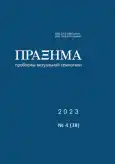The aim of this research is to study the territorial geocultural environment on the material of еру toponymic vocabulary containing color elements. The article considers the toponymic system of the language as a semiotic space that reflects not only the features of a geographical object, but also its socio-cultural characteristics. Toponyms are visual signs of the cultural landscape of a certain territory. They are the result of a meaningful (but rather complex and contradictory) nomination process, as well as a product of human cognitive activity and a kind of a “business card” of a geographical object. In the naming process, the nominator chooses one of many features of the referent that seems to him the most important. This feature is fixed in the internal form of the name of a geographical reality with the help of nominative means available in the language. One of the obvious features of any geographical object is its visual characteristics (shape, size, length, height, color, etc.). The color characteristic acts as one of the main motivating features in toponymic naming. And since color is one of the main parameters of visual perception of the surrounding reality, a color marker in the composition of a toponym is quite common. Color itself has a lot of cultural and symbolic meanings, which are preserved when the color designation is included in the name of a geographical object. The language material of the article is toponyms whose elements are the names of the classical seven-color optical spectrum, i.e., the seven colors of the rainbow (red, orange, yellow, green, blue, indigo, violet). The research material (more than 27 thousand American toponyms with a “rainbow” element) was obtained by a continuous sampling method from the Geographic Names Information System, in which more than two million toponyms are recorded. Each of the considered color markers is investigated from several perspectives in the article: the symbolism of the “rainbow” color is studied and systematized; a quantitative analysis of toponyms with a given color designation is carried out (depending on the type of named objects); the productivity of the use of color identification depending on the type of a toponym is revealed; a correlation between the color marker and the toponym distribution area is established; the main motivating factors of “color” naming, such as the visual characteristics of a geographical object and additional cultural and symbolic meanings are identified. The article proves that a color marker, as an element of a toponym, not only describes, defines, and characterizes the physical and geographical features of a topographic object, but also reflects the national and cultural features of the phenomena of reality in speakers’ minds. The anthropocentric direction in the study of the toponymic vocabulary, focusing on the analysis of units of the toponymic system in close connection with people’s mental and spiritual-practical activities allows regarding this system as a product of human cognitive activity (L. Weisberg, E. M. Vereshchagin, V. N. Telia, V. G. Kostomarov, et al.), and the elements of this system as a reflection of the worldview specific to a particular society, its views and ideas. The results of the study indicate the importance of the color element in toponymic nomination, which is the basis of the perceptual layer of the toponymic concept, i.e., it reflects the sensory image of a geographical object based on a person’s visual perception of the surrounding reality. The author confirms that, since color is an important source and transmitter of cultural and historical information about the object of the name, it is perceived as a kind of a symbol and a fundamental factor in the conceptualization of mental processes in toponymic naming.
 14-36
14-36


 37-58
37-58


 59-78
59-78


 79-98
79-98


 99-118
99-118


 119-142
119-142


 143-166
143-166


 167-189
167-189


 190-205
190-205


 206-220
206-220


 221-238
221-238


 239-260
239-260


 261-278
261-278











